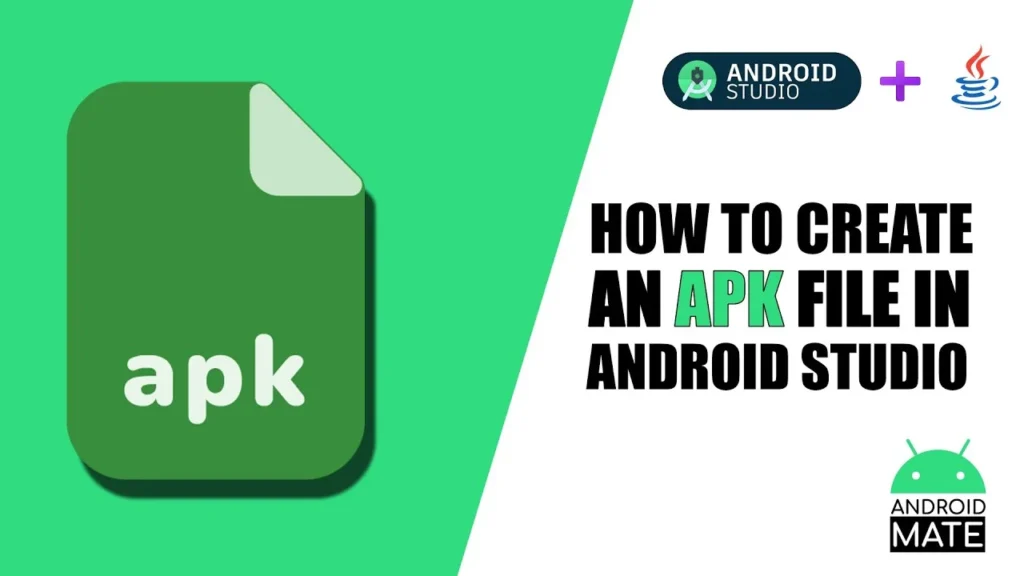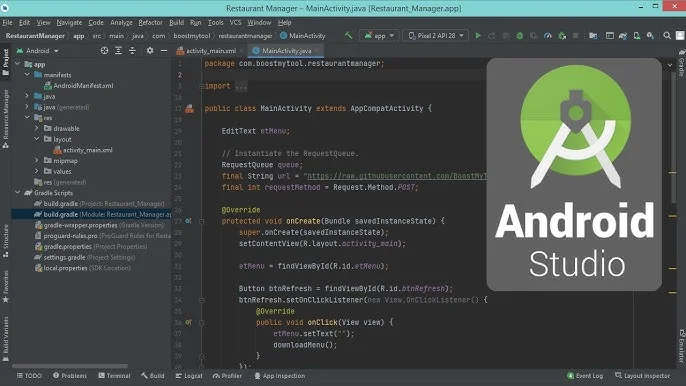Understanding to Create APK Files from Android Studio

How to Create APK Files from Android Studio is an essential cycle for any Android developer. The APK, or Android Bundle Unit, is the document design utilized by Android to circulate and introduce applications. Whether you’re trying your application or setting it up for discharge, knowing how to create an APK document is fundamental. This guide will take you through the step-by-step cycle of creating APK files from Android Studio. We’ll make sense of each move toward basic terms and guarantee you comprehend the cycle from beginning to end. An APK record is a bundle that contains every one of the vital parts of an Android application.
This incorporates the application’s code, assets, resources, and declarations. At the point when a client downloads and introduces an Android application from the Play Store, they’re introducing an APK document. APKs are like other programming establishment bundles like EXE files on Windows or DMG files on macOS. In Android improvement, creating an APK record is the last step in the wake of composing and testing your application. Once created, the APK document can be introduced on any Android gadget or transferred to the Play Store for dissemination. In any case, how precisely do you create this record? How about we find out?
Setting Up Android Studio:
Before you can create an APK, you should set up Android Studio appropriately. Android Studio is the authority IDE (Coordinated Advancement Climate) for Android improvement. It gives the instruments you want to configure, create, and test Android applications. On the off chance that you haven’t introduced Android Studio yet, you can download it from the authority Android developer site.
When introduced, open Android Studio and guarantee that your application project is prepared. Assuming you’ve been dealing with your application, ensure that everything is accumulated accurately and that there are no blunders in your code. It’s vital to fix any issues before continuing because they could create some issues while building the APK.
Building the APK in Debug Mode:
While creating APK files, you can produce them in two modes: troubleshooting and deliver. Troubleshoot APKs are utilized for testing, while discharge APKs are planned for public dissemination. We should begin with building an investigate APK.
Here’s how you can create a debug APK:
- Open your venture in Android Studio.
- Go to the Form menu situated at the highest point of the point of interaction.
- Select Form Bundle(s)/APK(s) and afterward pick Assemble APK(s).
- Android Studio will start assembling your APK record. This might require a couple of moments depending upon the intricacy of your application.
- When the APK is produced, a warning will show up at the base right of the screen. Click situate to find the APK document in your record voyager.
Your APK is presently prepared for testing. You can introduce it straightforwardly on your Android gadget by moving the APK record through USB or by involving an Android emulator for testing.
Generating a Release APK:

In the wake of testing your application and guaranteeing all that fills in true to form, now is the right time to produce a delivery APK. This APK will be endorsed with a computerized testament, which is expected for distributing your application on the Play Store. A delivery APK is improved for execution and security, making it ideal for public circulation.
Follow these steps to generate a release APK:
- Open your undertaking in Android Studio.
- Go to the Form menu and select Create Marked Group/APK.
- In the spring-up window, select APK and click Straightaway.
- You will be provoked to pick a key store document. A key store is a document that stores security declarations used to sign your APK.
- On the off chance that you as of now have a key store, select it. If not, you can create another one by clicking Create New.
- Finish up the necessary fields like key pseudonym, secret key, and declaration legitimacy.
- In the wake of choosing or creating a key store, click Straightaway.
- Presently, you will pick the form variation. Select delivery for a delivery APK.
- At last, click Finish. Android Studio will currently create the delivery APK, which can take a couple of seconds.
When the APK is produced, it will be saved in the application/assemble/yields/apk/discharge/registry of your undertaking.
Signing the APK:
Marking your APK is obligatory for appropriation on the Play Store. Marking includes joining a cryptographic key to your APK, which confirms the realness of your application. At the point when you produce a delivery APK utilizing the means above, Android Studio will sign the APK consequently on the off chance that you’ve given a key store. In any case, if you like to sign your APK physically, this is the way to make it happen:
- Open the order line or terminal on your PC.
- Utilize the jarsigner apparatus, which is remembered for the Java Improvement Unit (JDK), to sign your APK. The essential order is as per the following:
jarsigner -verbose -sigalg SHA1withRSA -digestalg SHA1 -keystore your-key-store-file.keystore your-app-release.apk key-alias
- You will be provoked to enter the secret phrase for your key store. In the wake of entering it, the APK will be agreed upon.
This signed APK is now ready for distribution.
Optimizing the APK with Zipalign:
In the wake of marking your APK, it’s great practice to upgrade it utilizing a device called zipalign. This guarantees that all information is appropriately adjusted for better execution and decreased memory utilization.
This is the way to utilize zipalign:
- Open the command line or terminal.
- Use the following command:
zipalign -v 4 your-app-release-unsigned.apk your-app-release.apk
- Supplant the document names with the suitable APK ways. When the cycle is finished, your APK is enhanced and fit to be dispersed.

Uploading the APK to Google Play:
With your delivery APK marked and upgraded, the following stage is transferring it to research Play for dispersion. In the event that you haven’t previously done as such, you’ll have to enlist for a Google Play Developer account.
When you have a record, follow these means:
- Sign in to the Google Play Console.
- Click Create Application and give the fundamental data, for example, app title, depiction, and screen captures.
- Under the App Deliveries area, click Oversee and afterward select Creation.
- Upload your marked APK document.
- In the wake of transferring the APK, you’ll be provoked to finish up extra subtleties like app content evaluations, security strategy, and value.
- When everything is finished, click Submit to publish your app.
Your app will go through Google’s review process before being made available to users on the Play Store.
More Queries: How to Install APK Files on Android
Testing the APK:
- Before transferring the delivery APK to find out about Play, it’s essential to completely test it.
- Even though you’ve tried the app in troubleshooting mode, testing the delivery APK guarantees that it works flawlessly.
- You can utilize an Android emulator or introduce the APK on an actual gadget to test it.
- Focus on execution issues, bugs, and UI components to guarantee the app is prepared for the general population.
- Testing ought to include a few phases, for example, checking similarity on various Android renditions and screen sizes.
- This step distinguishes any latest possible moment that could influence the client experience.
Conclusion
How to Create APK Files from Android Studio Download is a basic expertise for any Android developer. Whether you’re trying your app or setting it up for discharge, understanding the means associated with creating, marking, and it is urgent to improve an APK. With the guide above, you presently have an unmistakable guide to follow, guaranteeing your APK is created effectively and prepared for dispersion. By following these means, you’ll have the option to construct great APKs and send off your apps with certainty.




